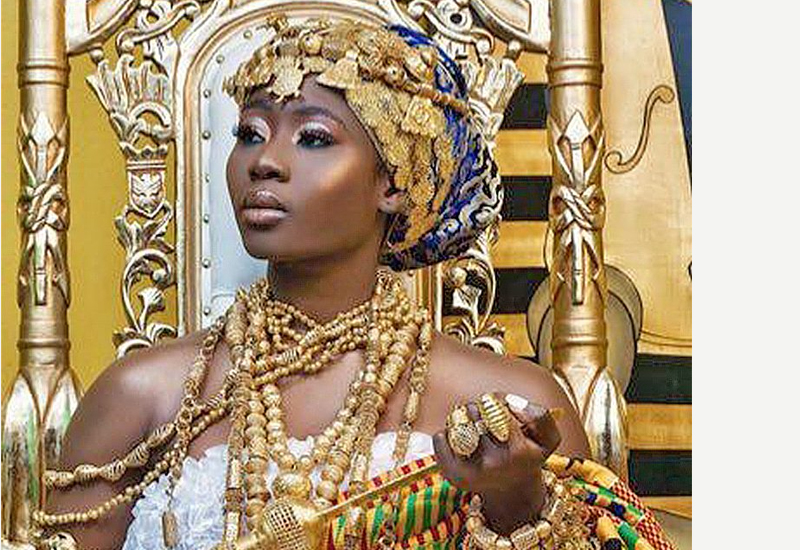Regalia distinguishes Asante royals and indicates the positions held by royal attendants. Items of regalia frequently incorporate gold as a display of royal power. Not only do these accessories dazzle the beholder, they also visualize Asante proverbs about leadership and society.
The splendor of Asante royal regalia first came to the attention of Europeans in 1819 with the publication of T. E. Bowdich’s Mission from Cape Coast Castle to Ashantee. In it, Bowdich recalled his travels to Kumasi, the Asante capital.
There he witnessed the full array of the kingdom’s wealth: the “resplendent” king; “massy” [massive] gold ornaments, “which glistened in every direction”; and large umbrellas made of “the most showy cloths and silks.” He described gilded instruments, gold breastplates, silk headwear, kente cloth togas, and leather sandals. Bowdich’s account also noted the Asante royal stool, displayed alongside the king and “entirely cased in gold.”
Rings, bracelets, armbands, and fly whisks all draw attention to the Asantehene’s (the king’s) gestures and body. Necklaces, whether worn beneath clothing or displayed on the chest, strengthen these implications of power and grandeur. The abundance of gold protected against malevolent forces, as well as confirmed the person’s wealth and elevated status.
Source: Ashantibiz
Submit your stories or articles to us via WhatsApp +233-245092915







